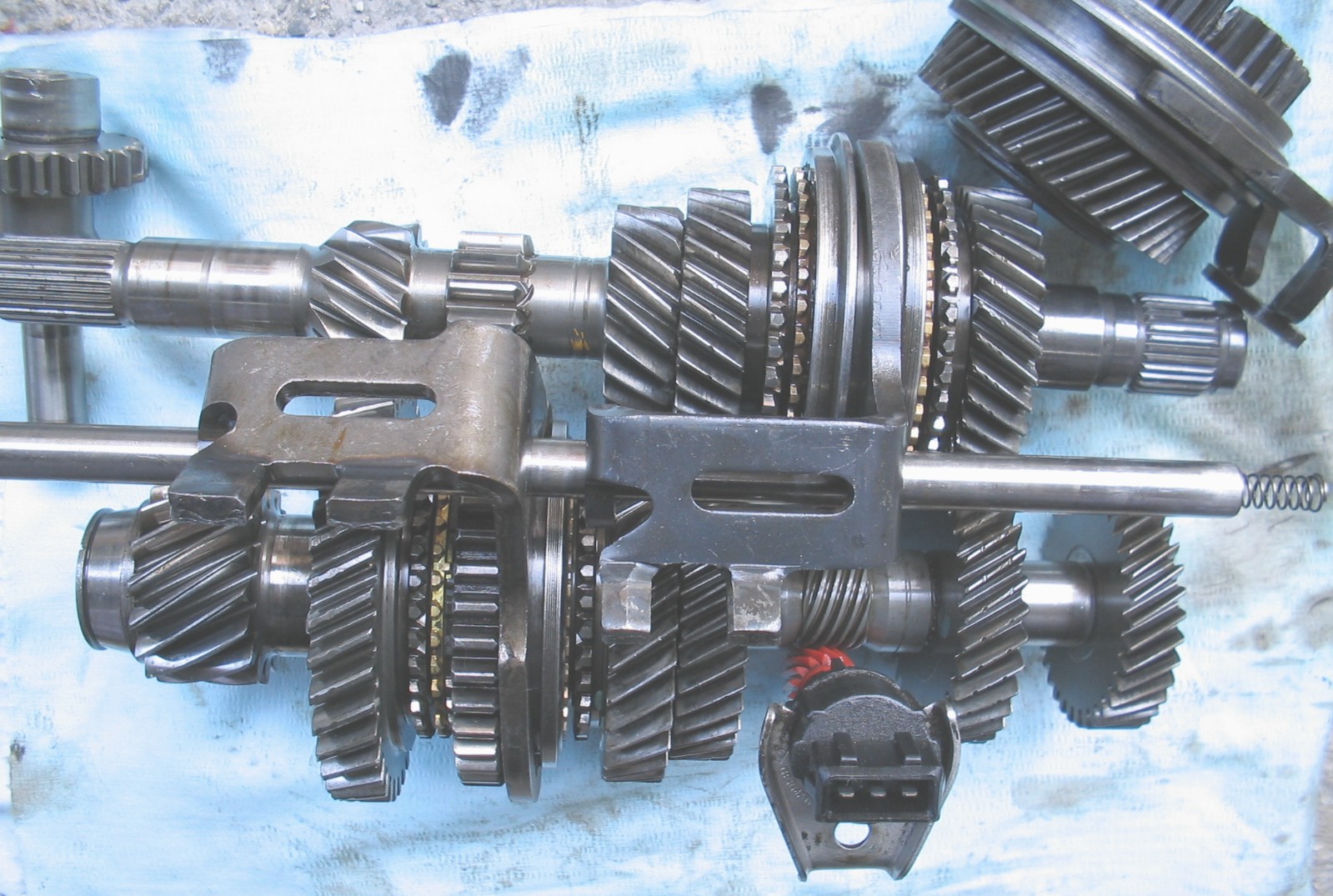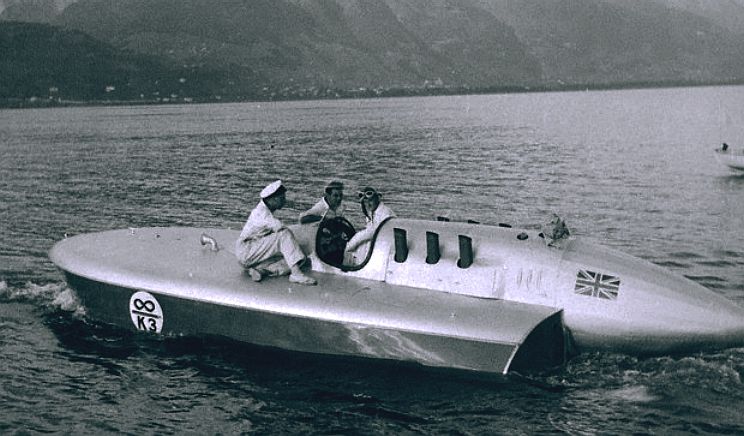|
V-drive
V-drive is a propulsion system for boats that consists of two drive shafts, a gearbox, and a propeller. In a "V-drive" boat, the engine is mounted in the rear of the boat and the front of the engine faces aft. Connected to the rear of the engine is the transmission. The first drive shaft connects the rear of the transmission to a gearbox mounted in the center of the boat. The second drive shaft extends from the gearbox to the rear and out the bottom of the boat to where a propeller is mounted. Fred Cooper's 1935 design for Malcolm Campbell's ''Blue Bird'' used a v-drive designed by Reid Railton Reid A. Railton (1895–1977) was a British automotive engineer, and designer of land and water speed record vehicles. Biography Reid Antony Railton was the son of a Manchester stockbroker: Charles Withingon Railton and his wife Charlotte Eliza ... for its 2,000 bhp engine. References Marine propulsion {{Water-transport-stub ... [...More Info...] [...Related Items...] OR: [Wikipedia] [Google] [Baidu] |
V-drive
V-drive is a propulsion system for boats that consists of two drive shafts, a gearbox, and a propeller. In a "V-drive" boat, the engine is mounted in the rear of the boat and the front of the engine faces aft. Connected to the rear of the engine is the transmission. The first drive shaft connects the rear of the transmission to a gearbox mounted in the center of the boat. The second drive shaft extends from the gearbox to the rear and out the bottom of the boat to where a propeller is mounted. Fred Cooper's 1935 design for Malcolm Campbell's ''Blue Bird'' used a v-drive designed by Reid Railton Reid A. Railton (1895–1977) was a British automotive engineer, and designer of land and water speed record vehicles. Biography Reid Antony Railton was the son of a Manchester stockbroker: Charles Withingon Railton and his wife Charlotte Eliza ... for its 2,000 bhp engine. References Marine propulsion {{Water-transport-stub ... [...More Info...] [...Related Items...] OR: [Wikipedia] [Google] [Baidu] |
Marine Propulsion
Marine propulsion is the mechanism or system used to generate thrust to move a watercraft through water. While paddles and sails are still used on some smaller boats, most modern ships are propelled by mechanical systems consisting of an electric motor or internal combustion engine driving a propeller, or less frequently, in pump-jets, an impeller. Marine engineering is the discipline concerned with the engineering design process of marine propulsion systems. Human-powered paddles and oars, and later, sails were the first forms of marine propulsion. Rowed galleys, some equipped with sail, played an important early role in early human seafaring and warfares. The first advanced mechanical means of marine propulsion was the marine steam engine, introduced in the early 19th century. During the 20th century it was replaced by two-stroke or four-stroke diesel engines, outboard motors, and gas turbine engines on faster ships. Marine nuclear reactors, which appeared in the 1950s, pro ... [...More Info...] [...Related Items...] OR: [Wikipedia] [Google] [Baidu] |
Drive Shaft
A drive shaft, driveshaft, driving shaft, tailshaft (Australian English), propeller shaft (prop shaft), or Cardan shaft (after Girolamo Cardano) is a component for transmitting mechanical power (physics), power and torque and rotation, usually used to connect other components of a drivetrain that cannot be connected directly because of distance or the need to allow for relative movement between them. As torque carriers, drive shafts are subject to torsion (mechanics), torsion and shear stress, equivalent to the difference between the input torque and the load. They must therefore be strong enough to bear the stress, while avoiding too much additional weight as that would in turn increase their inertia. To allow for variations in the alignment and distance between the driving and driven components, drive shafts frequently incorporate one or more universal joints, jaw couplings, or rag joints, and sometimes a Rotating spline, splined joint or prismatic joint. History The term ' ... [...More Info...] [...Related Items...] OR: [Wikipedia] [Google] [Baidu] |
Gearbox
Propulsion transmission is the mode of transmitting and controlling propulsion power of a machine. The term ''transmission'' properly refers to the whole drivetrain, including clutch, gearbox, prop shaft (for rear-wheel drive vehicles), differential, and final drive shafts. In the United States the term is sometimes used in casual speech to refer more specifically to the gearbox alone, and detailed usage differs. The transmission reduces the higher engine speed to the slower wheel speed, increasing torque in the process. Transmissions are also used on pedal bicycles, fixed machines, and where different rotational speeds and torques are adapted. Often, a transmission has multiple gear ratios (or simply "gears") with the ability to switch between them as the speed varies. This switching may be done manually (by the operator) or automatically (by a control unit). Directional (forward and reverse) control may also be provided. Single-ratio transmissions also exist, which simply chan ... [...More Info...] [...Related Items...] OR: [Wikipedia] [Google] [Baidu] |
Propeller
A propeller (colloquially often called a screw if on a ship or an airscrew if on an aircraft) is a device with a rotating hub and radiating blades that are set at a pitch to form a helical spiral which, when rotated, exerts linear thrust upon a working fluid such as water or air. Propellers are used to pump fluid through a pipe or duct, or to create thrust to propel a boat through water or an aircraft through air. The blades are specially shaped so that their rotational motion through the fluid causes a pressure difference between the two surfaces of the blade by Bernoulli's principle which exerts force on the fluid. Most marine propellers are screw propellers with helical blades rotating on a propeller shaft (ship), propeller shaft with an approximately horizontal axis. History Early developments The principle employed in using a screw propeller is derived from sculling. In sculling, a single blade is moved through an arc, from side to side taking care to keep presenting the ... [...More Info...] [...Related Items...] OR: [Wikipedia] [Google] [Baidu] |
Transmission (mechanics)
Propulsion transmission is the mode of transmitting and controlling propulsion power of a machine. The term ''transmission'' properly refers to the whole drivetrain, including clutch, gearbox, prop shaft (for rear-wheel drive vehicles), differential, and final drive shafts. In the United States the term is sometimes used in casual speech to refer more specifically to the gearbox alone, and detailed usage differs. The transmission reduces the higher engine speed to the slower wheel speed, increasing torque in the process. Transmissions are also used on pedal bicycles, fixed machines, and where different rotational speeds and torques are adapted. Often, a transmission has multiple gear ratios (or simply "gears") with the ability to switch between them as the speed varies. This switching may be done manually (by the operator) or automatically (by a control unit). Directional (forward and reverse) control may also be provided. Single-ratio transmissions also exist, which simply cha ... [...More Info...] [...Related Items...] OR: [Wikipedia] [Google] [Baidu] |
Fred Cooper (boat Designer)
Frederick or Fred Cooper may refer to: * Fred Cooper (bicyclist) (1852–1935), professional racing cyclist and bicycle manufacturer * Fred Cooper (cricketer, born 1888) (1888–1958), Essex cricketer * Fred Cooper (cricketer, born 1921) (1921–1986), Lancashire and Worcestershire cricketer * Fred Cooper (footballer) (1934–1972), professional footballer for West Ham United in the 1950s * Fred Cooper (illustrator), Society of Illustrators's Hall of Fame * Frederick Augustus Cooper (1834–1908), Australian politician * Frederick Henry Cooper (1827–1869), served as Deputy Commissioner of Amritsar, Punjab during the Indian rebellion of 1857 * Frederic Taber Cooper (1864–1937), American editor and writer * Frederick Cooper (actor) (1890–1945), British actor in ''Henry V'' * Frederick Cooper (historian), American historian and professor of history at New York University * Fred Cooper (sport shooter) (1910–?), British Olympic sport shooter * Fred Cooper (boat designer) ... [...More Info...] [...Related Items...] OR: [Wikipedia] [Google] [Baidu] |
Malcolm Campbell
Major Sir Malcolm Campbell (11 March 1885 – 31 December 1948) was a British racing motorist and motoring journalist. He gained the world speed record on land and on water at various times, using vehicles called ''Blue Bird'', including a 1921 Grand Prix Sunbeam. His son, Donald Campbell, carried on the family tradition by holding both land speed and water speed records. Early life and family Campbell was born on 11 March 1885 in Chislehurst, Kent, the only son of William Campbell, a Hatton Garden diamond seller. He attended the independent Uppingham School. In Germany, learning the diamond trade, he gained an interest in motorbikes and races. Returning to Britain, he worked for two years at Lloyd's of London for no pay, then for another year at £1 a week. Between 1906 and 1908, he won all three London to Land's End Trials motorcycle races. In 1910, he began racing cars at Brooklands. He christened his car ''Blue Bird'', painting it blue, after seeing the play '' The Blue ... [...More Info...] [...Related Items...] OR: [Wikipedia] [Google] [Baidu] |
Blue Bird K3
''Blue Bird K3'' is a hydroplane powerboat commissioned in 1937 by Sir Malcolm Campbell, to rival the Americans' efforts in the fight for the world water speed record. She set three world water speed records, first on Lake Maggiore in September 1937, then later twice raising her own record. The name "K3" was derived from its Lloyd's unlimited rating, and was carried in a prominent circular badge on the forward hull. Design After Campbell's achievement of the 300 mph land speed record with Blue Bird in 1935 he retired from advancing the land speed record. Shortly afterwards he switched his attentions to the water speed record, at that time dominated by the American Gar Wood. Harris, Skimming the Surface Blue bird was designed by Fred Cooper and built by Fred Goatley of Saunders-Roe. The design was intended to be the smallest possible hull capable of carrying the Rolls-Royce R racing engine. Campbell had already used this engine in his ''Blue Bird'' car, and they had ... [...More Info...] [...Related Items...] OR: [Wikipedia] [Google] [Baidu] |
Reid Railton
Reid A. Railton (1895–1977) was a British automotive engineer, and designer of land and water speed record vehicles. Biography Reid Antony Railton was the son of a Manchester stockbroker: Charles Withingon Railton and his wife Charlotte Elizabeth (née Sharman), Reid was born in Chorley, Alderley Edge, Cheshire and was christened on 13 August 1895 at the local parish church. He was educated at Rugby School and Manchester University. He joined Leyland Motors in 1917 where he worked with J.G. Parry-Thomas on the Leyland Eight luxury car. He left in 1922 to set up the Arab Motor Company where he was chief designer. Only about twelve cars were built, of which two low-chassis cars survive. One is in the Isle of Man and the other one (chassis number 6, engine number 10, registration UW 2) is now in Austria having been rebuilt and rebodied by David Barker in the early 1990s. In 1927, on the death of his friend Parry-Thomas, Railton closed the Arab factory and moved to Brooklands ... [...More Info...] [...Related Items...] OR: [Wikipedia] [Google] [Baidu] |





